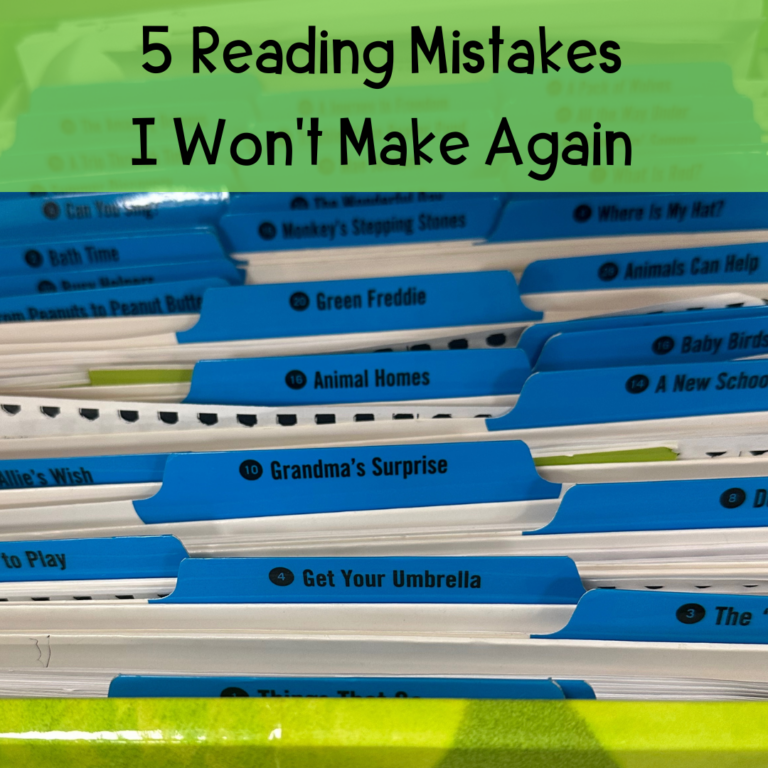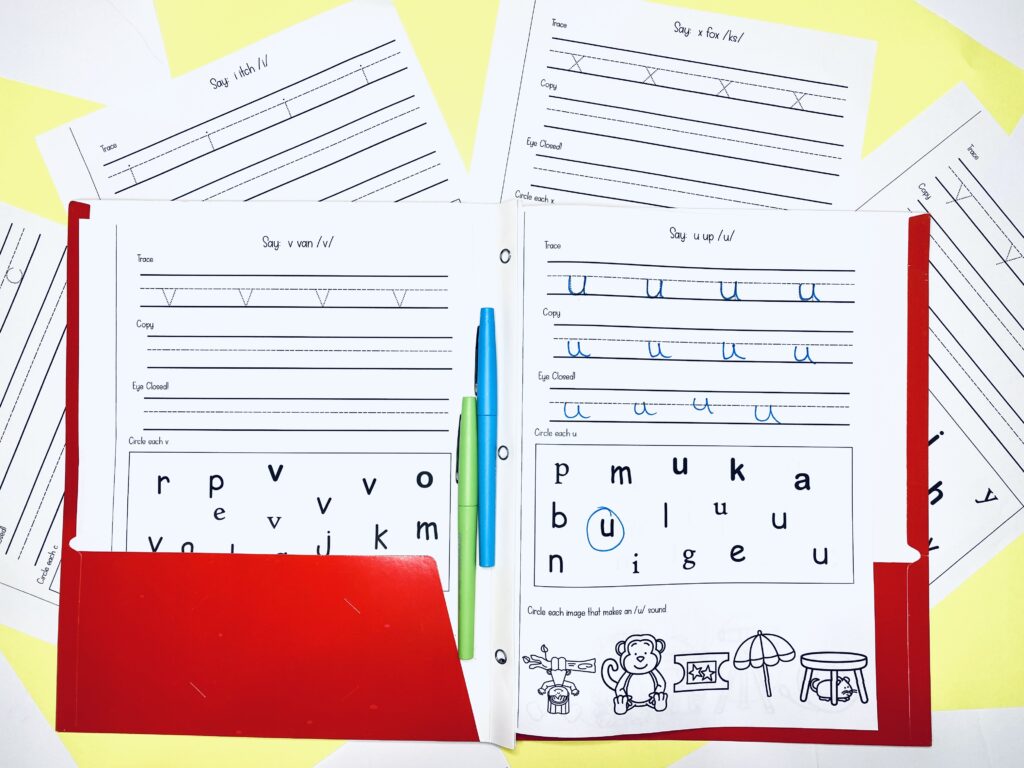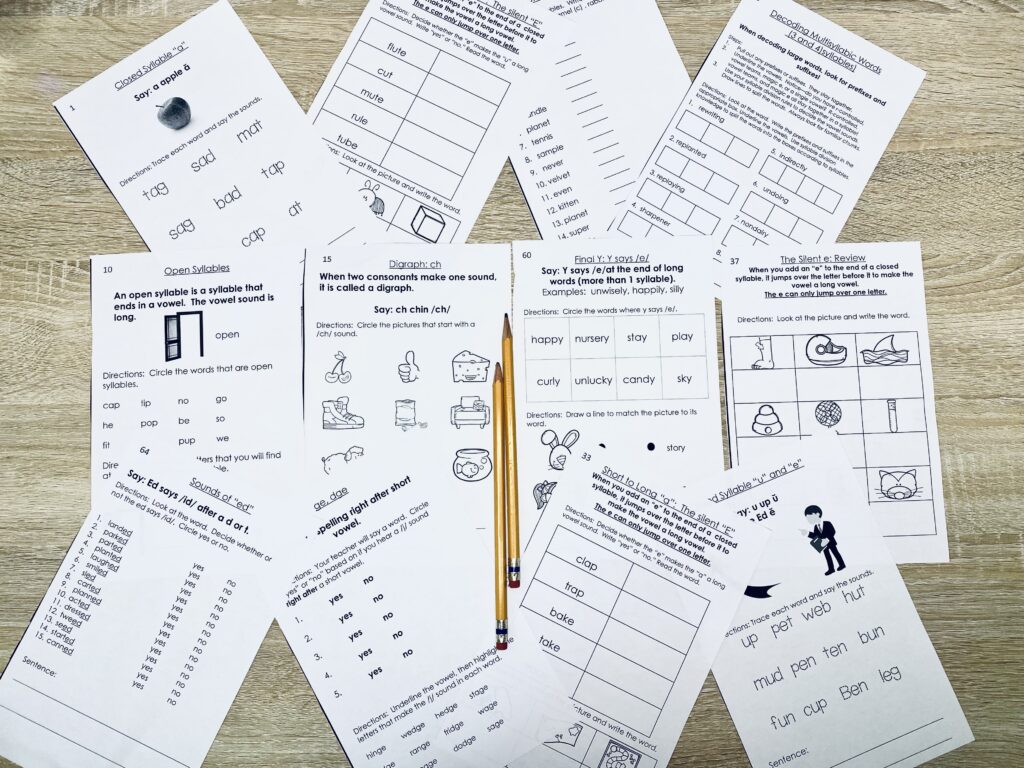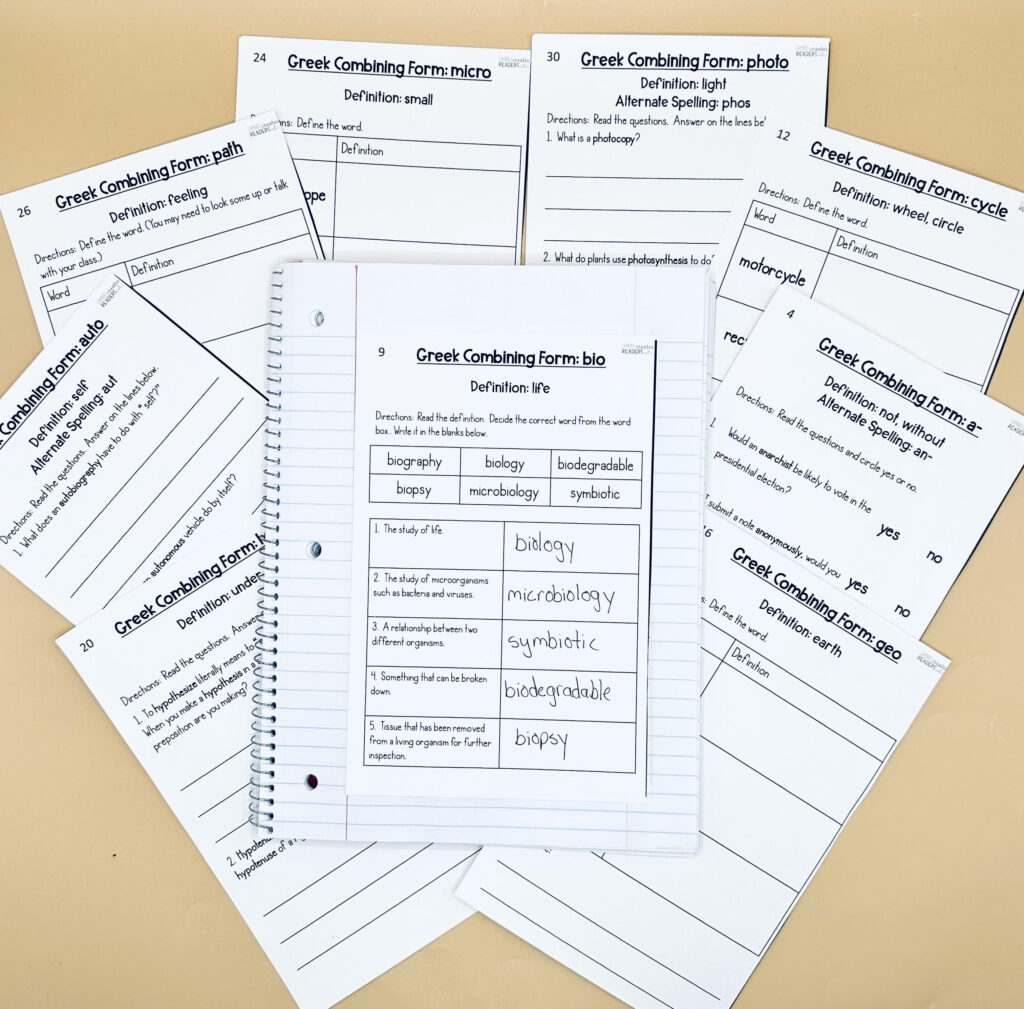
Share This:
When I taught 4th grade, we used interactive notebooks for science and Virginia Studies. At the time, it felt like a great way to give kiddos the content they needed. In reality, though, there was very little that was interactive. Instead, it was more like a pre-printed notepage where I asked students to highlight parts of the text. I’m sure you can picture the engagement there.
It wasn’t until I was Orton-Gillingham trained that I realized the true power that an interactive notebook could have. Not just a place to play lip-service to knowledge, but an area where students can have that initial meaningful practice with a new skill. During those months of lockdown in 2020, I worked to make my first interactive notebook. Since that time, it has grown from a single phonics notebook with really crummy clipart to multiple notebooks that I use with students across all grade levels, K-5.
For me, an interactive notebook is a place where students can practice a skill with the teacher. This is not something we are giving students for independent practice. Instead, after I have introduced a skill (whether it be a letter sound, a particular grapheme, or a morpheme), I use interactive notebooks to work with kiddos to practice that skill. I place all the pages inside of a composition book. Planning becomes a lot easier when I know that after I introduce a skill, the phonics notebook is the first place we go to for practice.
When I first started looking for interactive notebooks, nothing I found really aligned with how I taught. There was so much cutting and pasting and manipulating. I don’t have time for students to make flap books for every single skill.
So I set out to make notebooks that were just print, cut down the middle, and glue. While cute crafts have their purpose and can provide much-needed fine motor practice, I do not want it to overtake the precious time I have in small group intervention.

Interactive notebooks are helpful because they give you the first initial practice with a specific skill. They are a powerful way to provide students guided practice.
Alphabet interactive notebooks assist students with proper letter formation. In my notebooks, there is a place to practice letter formation, letter identification, and an alliteration activity.
I have included two versions—a full-page version and a half-page version. For my intervention students, I like to use the full-page version because the tracing is larger. I left a ½ inch margin on the side to put them inside of a folder. In the classroom, you can choose whether to use the half-page version in a composition book, or the full page version in a folder!

You could easily print the notebooks in the order you teach letters and then make copies of the entire alphabet notebook. When we have finished, I send it home to parents so they can see all the work they’ve done!
I started interactive notebooks with the phonics notebooks. I found myself trying to make notepages each week for my students and realizing that I just couldn’t keep doing it. Now that the notebook is complete, I save so much time each week. I hope these pages can do the same for you.
With a phonics interactive notebook, a sound-symbol correspondence is introduced. Then, students are given practice with spelling and/or reading that sound-symbol correspondence. There’s a variety of activities, to include dictation, spelling words from pictures, analogies, matching pictures to graphemes, and more.

If you know you need to teach phonics, but just aren’t sure where to start, these are a great way to get you started. I’ve been using my interactive notepages for almost 4 years now. It’s gotten to the point where I’ve made versions of them for my county that aligns with our pacing. They are one of the most powerful tools in my teaching toolbox.
Phonics instruction doesn’t stop with single-syllable words. It’s important to remember that English is a morphophonemic language, so we must contend with both the phonetic level (sound-symbol correspondences) and the meaning level (understanding morphemes.) It is only when our children understand both that the greatest impact will occur.
Morphology interactive notebook are intended to help children unlock meaning in words. Where the phonics interactive notebooks help students to solidify that sound-symbol correspondence, these notebooks are focused on meaning.

Morphology notebooks do not have as much practice with spelling. Instead, they are used to identify morphemes and understand words that use them. I use these with my students who are beginning to decode multisyllabic words. Over 80% of English words are multisyllabic, and it is with morphology that we equip students with the ability to read and understand those words.
I have created morphology notebooks for Anglo-Saxon, Latin, and Greek. Because all my students have used phonics notebooks in the past, the transition to morphology notebooks is seamless. You can start with Anglo-Saxon in 2nd or 3rd, but by 4th grade we must be utilizing Latin morphology! Latin morphemes account for a majority of our multisyllabic words. Greek tends to be the hardest, and I would only use with 5th grade and beyond.
If you are looking for a tool to explicitly teach your students the different letters, sound-symbol correspondences, and morphemes they need–look no further. Interactive notebooks are an easy, no-prep way that you can give that critical practice to your students. Choose the notebooks that are best suited to your grade-level. If you are an interventionist, you may want to look into the interactive notebook bundle to utilize with all grade levels.
Remember this, though–these notebooks are just the start. We need continued practice with any skill we introduce with our students.
Share This:

Savannah Campbell is a K-5 reading specialist. She has taught her entire 12-year teaching career at the school she went to as a child. She holds two master’s degrees in education from the College of William and Mary. Savannah is both Orton-Gillingham and LETRS trained. Her greatest hope in life is to allow all children to live the life they want by helping them to become literate individuals.

Savannah Campbell is a K-5 reading specialist. She has taught her entire 12-year teaching career at the school she went to as a child. She holds two master’s degrees in education from the College of William and Mary. Savannah is both Orton-Gillingham and LETRS trained. Her greatest hope in life is to allow all children to live the life they want by helping them to become literate individuals.
Feeling overwhelmed with all the terminology out there? Want to know the key terms all teachers need to teach phonics? In this FREE Rules of English cheat sheet, you get a 5 page pdf that takes you through the most important terms for understanding English—you’ll learn about digraphs, blends, syllable types, syllable divisions, and move. Grab today and take the stress out of your phonics prep!
